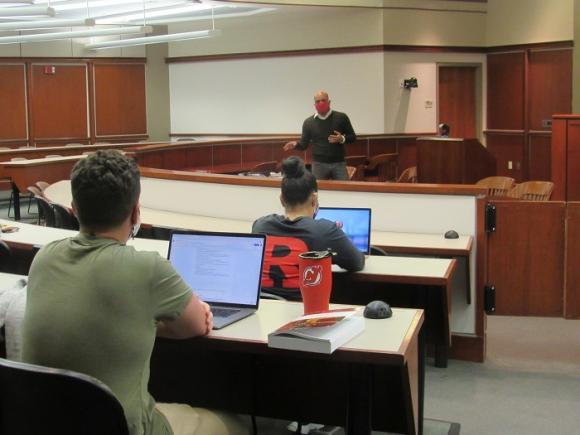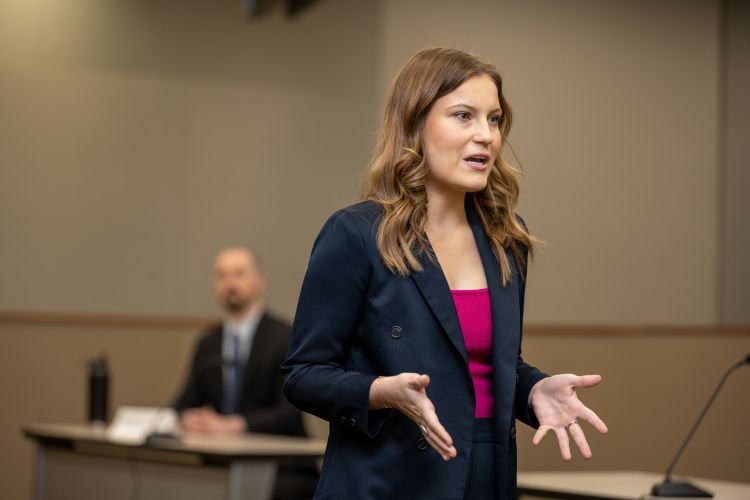Top Methods for Producing Impactful Trial Presentations in Courtroom Setups
Top Methods for Producing Impactful Trial Presentations in Courtroom Setups
Blog Article
Navigating the Intricacies of Test Presentations: Tips for Seamless Delivery and Compelling Arguments
In the realm of legal procedures, the art of trial discussion stands as a vital component of success. The intricacies intrinsic in test presentations require a fragile balance of finesse, approach, and skill.

Comprehending Trial Purposes
To properly navigate a trial, it is crucial to have a clear understanding of the goals that require to be accomplished. Prior to entering the court room, lawful groups must specify their objectives and desired end results. These purposes work as guiding concepts throughout the trial, shaping approaches and influencing decision-making procedures.
Comprehending trial purposes includes a detailed evaluation of the case, legal criteria, and the customer's benefits. Trial Presentations. It calls for a thorough assessment of the truths, determining vital issues, and expecting possible challenges. By setting quantifiable and particular objectives, attorneys can customize their debates and discussions to straighten with the wanted results
Additionally, a clear understanding of trial goals allows legal groups to focus on evidence, witnesses, and lawful debates properly. It permits for the advancement of a coherent story that reverberates with the judge and jury, enhancing the overall case discussion.

Organizing Proof Effectively
Having a clear understanding of test objectives lays the foundation for organizing proof properly in lawful proceedings - Trial Presentations. By straightening the discussion of evidence with the preferred results of the test, lawful groups can enhance their arguments and boost their persuasiveness. One vital facet of arranging evidence is classification. Organizing evidence based upon motifs or importance to particular legal elements can assist improve the presentation and make complicated details much more absorbable for the court or court.
One more key component in arranging evidence successfully is developing a sensible flow. Providing proof in a coherent and consecutive way can assist develop an engaging story that supports the lawful arguments being made. Furthermore, using aesthetic aids such as timelines, graphs, or charts can additionally enhance the company of evidence and help in making clear complex relationships or sequences of occasions.
Furthermore, ensuring that all evidence provided is relevant and admissible to the instance is necessary. Pointless or inadmissible evidence can interfere with the toughness of the disagreement and potentially damage the trustworthiness of the here and now celebration. Consequently, a careful evaluation and choice procedure must be undertaken to consist of just one of the most legally sound and impactful proof in the trial presentation.
Crafting Convincing Stories
Crafting compelling narratives plays a crucial role in presenting influential arguments throughout legal procedures. A well-crafted narrative has the power to mesmerize the target market, stimulate feelings, and ultimately guide the decision in favor of the providing party. When building a story for a trial presentation, it is essential to develop a clear story that highlights bottom lines and links them in a systematic fashion. Begin by outlining the realities of the situation in an engaging manner, making sure that the series of events is very easy to follow. Introduce personalities effectively, providing history details that helps the target market comprehend their actions and inspirations. In addition, integrating brilliant descriptions and appealing language can bring the narrative to life, making it more unforgettable for the discretionary. By weaving together proof, testimony, and lawful arguments into a natural and convincing narrative, lawyers can efficiently advocate for their customers and boost the possibility of a beneficial end result in the court.
Mastering Visual Aids
Effective usage of visual help is hop over to here key to enhancing the effect and clarity of trial presentations. Aesthetic aids, when used purposefully, have the power to simplify complex info, strengthen essential factors, and leave a long-term impact on the court and jury. To understand aesthetic help in trial presentations, it is critical to make sure that they are clear, concise, and helpful hints relevant to the disagreements being made.
When incorporating visual aids, such as graphes, pictures, timelines, or graphs, right into a trial discussion, it is important to maintain them aesthetically appealing yet professional. The visuals ought to complement the verbal arguments, giving a visual depiction of the details being gone over without overwhelming the audience with unnecessary information.
Moreover, experimenting the aesthetic help ahead of time is important to make certain a seamless shipment during the test. Acquainting oneself with the material, shifts, and timings of each visual aid can assist keep the circulation of the discussion and protect against technical glitches that might develop.
Providing Impactful Closing Disagreements
An engaging closing debate offers as the end result of a trial discussion, encapsulating the core narrative and convincing the judge and court towards a positive choice. Begin by outlining the primary disagreements that sustain your client's placement, highlighting why the proof presented throughout the trial supports your story.
Furthermore, incorporating psychological appeal can further strengthen your closing disagreement. Inevitably, a well-crafted closing debate need to leave an enduring perception, engaging the judge and jury to rule in your client's favor.
Final Thought
To conclude, grasping test discussions entails recognizing purposes, organizing proof, crafting narratives, making use of visual help, and delivering impactful closing arguments. By executing these strategies efficiently, legal representatives can offer their situation seamlessly and make compelling debates in the court room. It is critical to browse the intricacies of test discussions with precision and ability to achieve success in lawful procedures.
By lining up the discussion of proof with the wanted end results of the test, legal groups can reinforce their arguments and improve their persuasiveness (Trial Presentations). To master visual aids in test presentations, it is critical to ensure that they are clear, concise, and relevant to the debates being made
A compelling closing debate serves as the conclusion of a go now trial discussion, enveloping the core narrative and persuading the judge and jury in the direction of a desirable decision. Begin by detailing the major arguments that support your customer's setting, emphasizing why the evidence presented throughout the test supports your story.In verdict, mastering test presentations involves recognizing goals, organizing evidence, crafting narratives, utilizing aesthetic help, and delivering impactful closing arguments.
Report this page